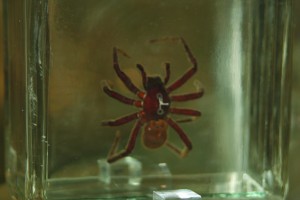I promised ages ago to post about the nerdy museum phenomenon that is The Brain Scoop. This seems like a brilliant time to post as it has just reached the next stage in its development. The Brain Scoop began only a few months ago in December 2012 when Vlogbrother Hank Green shot a video blog post from the University of Montana’s Philip L. Wright Zoological Museum. There he met museum studies student and curatorial assistant Emily Graslie. Emily’s enthusiasm secured her an invitation to start her own YouTube channel as part of the Nerdfighter family (on which more in a later post). As the museum is mostly a research collection this was a rare opportunity to display objects to the public. The series also went behind the scenes, and in a series of stomach turning episodes Emily even dissected a wolf. The video in which the wolf is skinned currently has around 217,000 views!
As an aside, I chatted to my colleague Claire about Brain Scoop and we compared the books on taxidermy that we had bought following Emily’s recommendations. Claire has been volunteering at our own university zoology collection The Cole Museum of Zoology and is also a digital aficionado. Check out Claire the Conservatrix to find out more.
Anyway, back to Brain Scoop. The Field Museum, Chicago became aware of the channel and invited Emily to visit. They were so impressed that they made her the Chief Curiosity Correspondent. I was a little sad to see Emily leave the smaller research collection but I’m excited to see what she comes up with in Chicago. Emily is a positive role model for young women who might be considering STEM careers. Brainscoop also makes me wonder whether students or ‘experts in training’ make more accessible role models than the established academics that we usually see on TV documentaries.
Finally, the success of The Brain Scoop demonstrates that zoology and taxidermy have a nerdy appeal when pitched correctly. Other examples which embrace the kookiness of zoology collections are my twitter favourites Glass Jar of Moles (UCL’s Grant Museum) and the Horniman Museum’s Walrus. These social media experiments work because their authors aren’t restricted by brand or ‘organisational voice’. They use their own voices and embrace their inner nerd.




